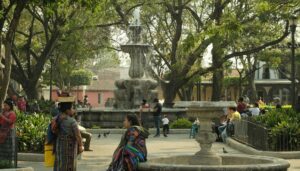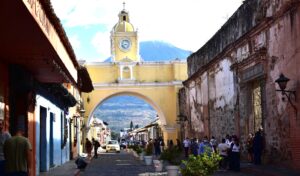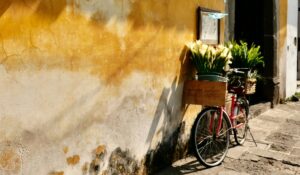
Discover the History Inside Museo Santiago de los Caballeros in Guatemala
When people visit Guatemala, they often think of volcanoes, ancient Maya ruins, or colorful markets. However, the country also holds many cultural and historical treasures that deserve attention. One of these is the Museo Santiago de los Caballeros. Located in the beautiful city of Antigua Guatemala, this museum offers a window into the country’s colonial past and rich cultural heritage.
In this post, we’ll uncover what makes Museo Santiago de los Caballeros special, what you can expect to see inside, and why it belongs on your travel list. From stunning colonial art to powerful earthquake history, this museum offers an unforgettable experience for every visitor.
A Glimpse into the Colonial Past
To truly appreciate Museo Santiago de los Caballeros, it’s important to understand the history of its location. The museum sits within the former Palacio de los Capitanes Generales, or Palace of the Captains General. This grand building once served as the administrative heart of Central America during Spanish rule.
Back in the 16th to 18th centuries, Antigua was the capital of the Spanish Kingdom of Guatemala, which stretched from southern Mexico all the way to Costa Rica. Important decisions about trade, religion, and colonial affairs were made inside this very palace.
Sadly, devastating earthquakes struck Antigua multiple times in the 1700s, leaving the palace and much of the city in ruins. The government eventually moved the capital to present-day Guatemala City. However, instead of being forgotten, the former palace found a new life as Museo Santiago de los Caballeros, preserving and sharing centuries of history with visitors from around the world.
What Makes Museo Santiago de los Caballeros Unique

You might ask, with so many museums in Guatemala, what makes this one worth visiting? The answer is simple. Museo Santiago de los Caballeros holds a rare mix of colonial, political, and religious artifacts, offering a full picture of life in Antigua’s glory days.
Unlike many museums that focus only on ancient Maya history, this museum celebrates the colonial chapter of Guatemala’s story. It also gives visitors a chance to explore one of the most important surviving colonial buildings in Central America.
Let’s take a closer look at what you’ll find inside.
Highlights of the Museum
Colonial Art and Religious Treasures
One of the main reasons people visit Museo Santiago de los Caballeros is to see its impressive collection of colonial-era religious art. The museum displays paintings, sculptures, and altar pieces from the 16th, 17th, and 18th centuries.
Many of these items came from nearby churches and convents, which were abandoned or damaged after the earthquakes. They include life-sized statues of saints, oil paintings of religious scenes, and beautifully carved wooden altars. Each piece reflects the powerful role the Catholic Church played during Guatemala’s colonial period.
The Old Council Chambers
Another favorite stop within Museo Santiago de los Caballeros is the council chamber. This room once served as the main meeting space for colonial leaders. It’s easy to imagine them gathering here to make decisions that would shape the future of Guatemala and its neighboring territories.
Today, the room still holds antique furniture, maps, and important colonial documents. Visitors often find it fascinating to see the original layout and learn how politics worked during the Spanish Empire’s rule in Central America.
Earthquake History and Ruins
Because Antigua is famous for its history of earthquakes, the museum also features exhibits about these natural disasters. Large photos, models, and records explain how different quakes affected the city throughout history.
Even today, some parts of Museo Santiago de los Caballeros still show visible earthquake damage. Cracked walls, uneven stone floors, and partially collapsed sections give visitors a real sense of the city’s resilience. It’s one of the few places where history feels truly alive, as you can see the effects of the past right in front of you.
Why You Should Add It to Your Itinerary

If you’re still wondering whether to visit Museo Santiago de los Caballeros, here are a few good reasons why it’s worth your time:
1. A Convenient Central Location
The museum sits in Antigua’s Central Park area, making it easy to include in your sightseeing plans. Once you finish exploring the museum, you can walk to nearby attractions like the Antigua Cathedral, Santa Catalina Arch, and several local artisan markets.
2. A Different Perspective on Guatemala’s Past
While many tourists focus on Maya history, the colonial period also played a huge role in shaping Guatemala’s culture, architecture, and religious traditions. Museo Santiago de los Caballeros tells this important part of the story in a way that’s engaging, educational, and accessible for all ages.
3. A Family-Friendly Activity
Traveling with kids or older family members? This museum is a great stop because it’s not too large or overwhelming. The exhibits are visually appealing, and the spacious layout makes it easy to move around.
Practical Visitor Information
Before you head out, it’s helpful to know a few details about visiting Museo Santiago de los Caballeros:
- Location: South side of Antigua’s Central Park, inside the Palacio de los Capitanes Generales
- Opening Hours: Typically open daily from 9:00 AM to 4:00 PM. Hours can change during holidays or special events, so it’s wise to check locally.
- Admission Fee: There’s a small entrance fee. Discounts are sometimes available for students, children, and Guatemalan residents.
Wear comfortable shoes, as some areas have uneven flooring from the original stone layout. Also, ask about photography rules at the entrance since some exhibits may have restrictions.
Nearby Places to Visit
To make the most of your day in Antigua, you can easily pair your museum visit with other attractions:
- Antigua Guatemala Cathedral: A stunning church ruin just across Central Park
- Santa Catalina Arch: The city’s famous yellow arch and a must-see photo spot
- Local Markets: Browse stalls filled with handmade textiles, jewelry, and souvenirs
These spots are all within walking distance, giving you a full afternoon of sightseeing without needing transportation.
Final Thoughts
In conclusion, Museo Santiago de los Caballeros stands out as one of the most culturally and historically significant places in Antigua Guatemala. Its rich collection of colonial art, preserved council chambers, and exhibits on earthquake history offer a meaningful experience you won’t find anywhere else.
Whether you’re passionate about history or simply curious about Guatemala’s past, this museum deserves a spot on your Antigua itinerary. Thanks to its central location, engaging exhibits, and deep connection to one of Central America’s most important colonial landmarks, it remains a must-visit for travelers of all kinds.
And while you’re in town, why not make the most of your adventure? If you’re looking for a comfortable and friendly place to stay, reach out to Tropicana. We offer cozy and affordable accommodation options right here in Antigua — perfect for relaxing after a day of exploring.
Looking for a little more adventure? You might want to join one of our famous volcano hiking tours. Our Acatenango Volcano overnight hike is a guest favorite, offering incredible views of Volcán Fuego’s eruptions under a starry sky. Plus, if you have extra days to spare, feel free to ask us about other destinations around Guatemala you can visit.
And no need to stress about getting around — we also offer shuttle services to popular spots like Lake Atitlán, Semuc Champey, El Paredón, and more. It’s a hassle-free way to explore the best of Guatemala at your own pace.
So, if you find yourself in Antigua, be sure to stop by Museo Santiago de los Caballeros — and when you’re ready to rest, adventure, or travel beyond, Tropicana has you covered. See you in Antigua soon!


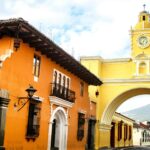 Previous Post
Previous Post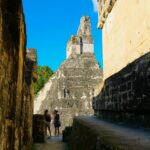 Next Post
Next Post
